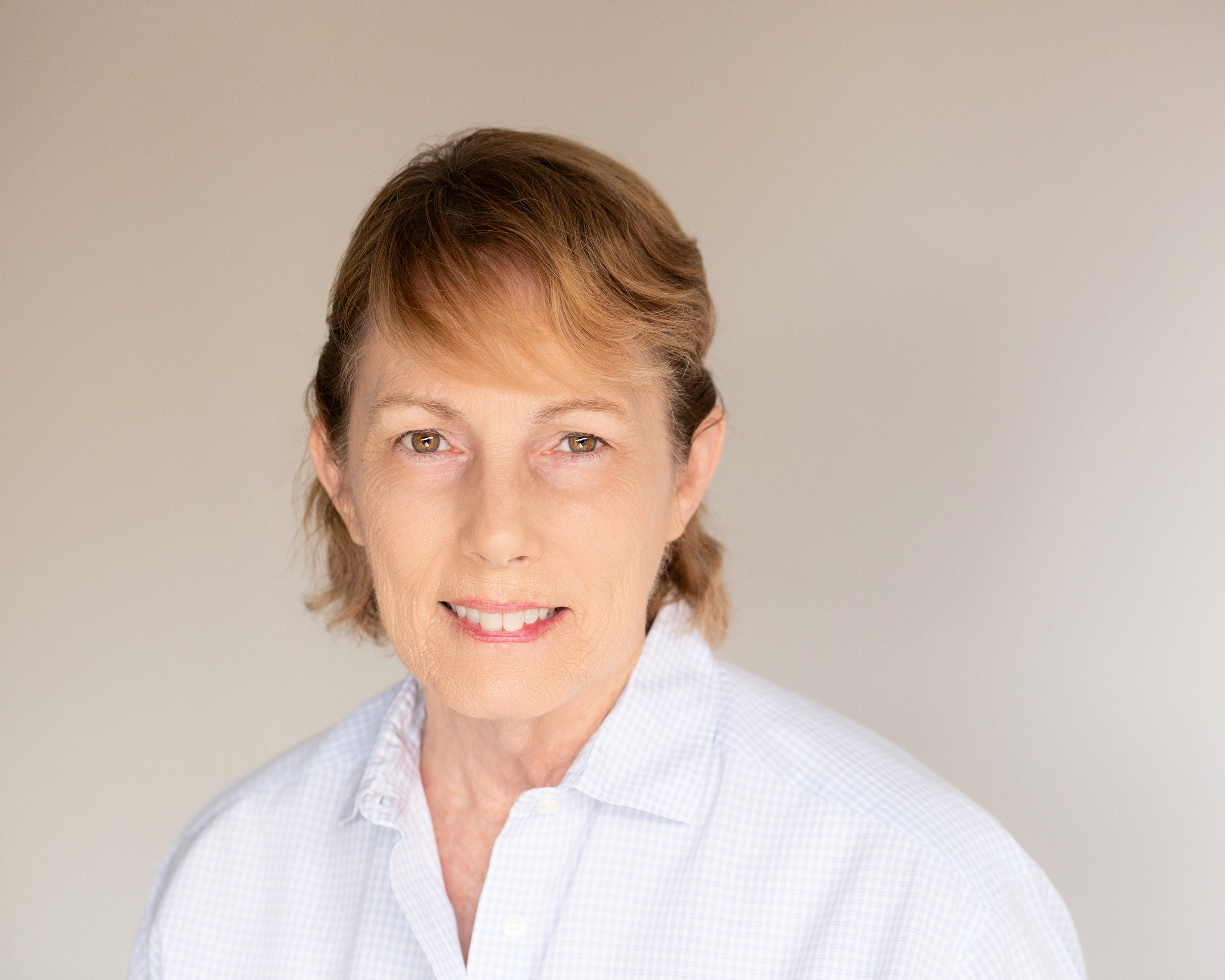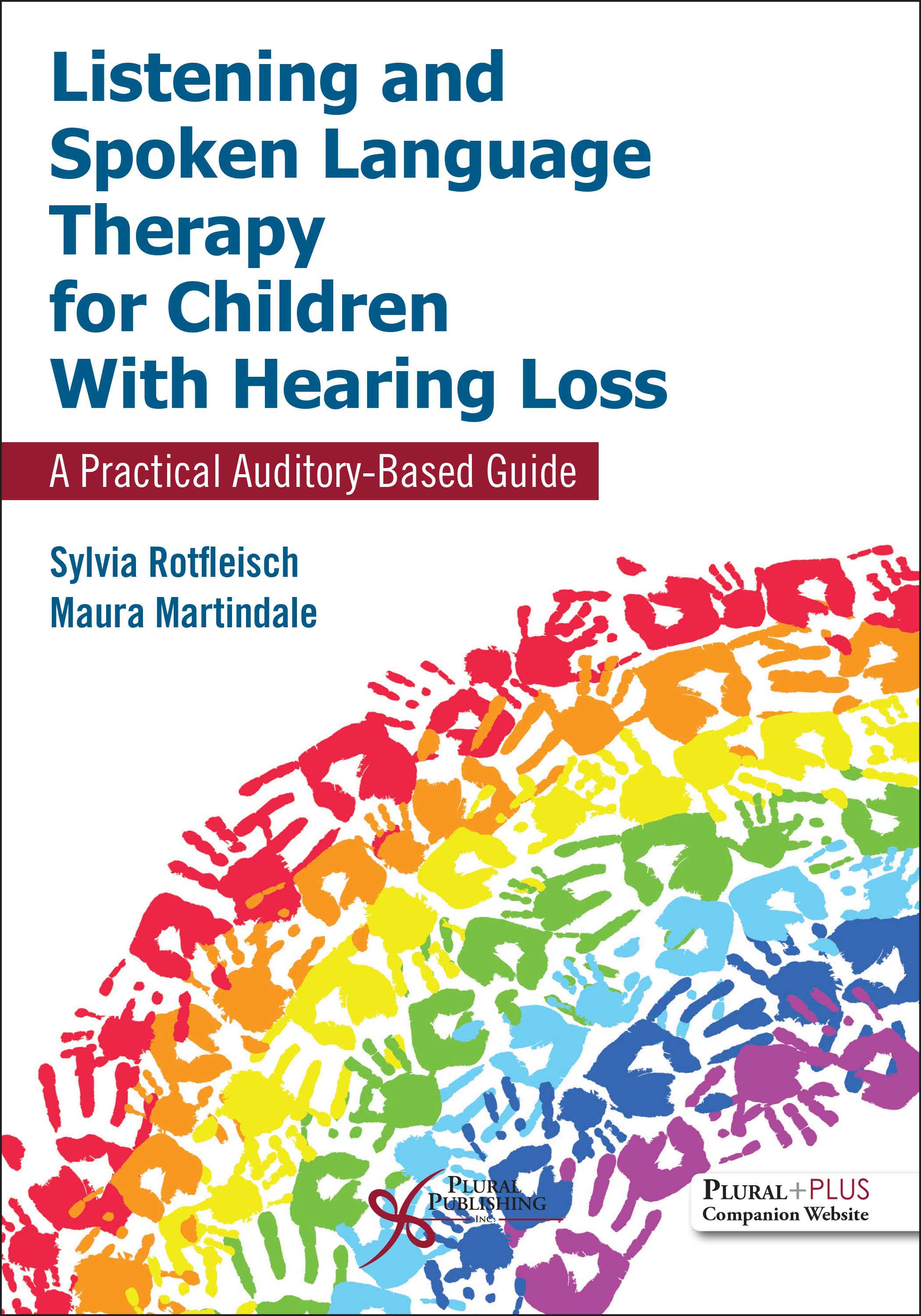
Listening and Spoken Language Therapy for Children With Hearing Loss: A Practical Auditory-Based Guide
First Edition
Sylvia Rotfleisch, Maura Martindale
Details: 310 pages, Full Color, Softcover, 7" x 10"
ISBN13: 978-1-63550-387-6
© 2023 | Available
For Instructors
Purchase
Listening and Spoken Language Therapy for Children With Hearing Loss: A Practical Auditory-Based Guide is a well-organized and practical textbook based on a proven spoken language, speech, and listening model for teaching children with hearing loss. Supported by decades of research and experience, the stage-based model is presented with clear steps for intervention. Written in easy-to-understand language, this textbook is accessible to university students who are new to the field of hearing loss, as well as to new and experienced professionals. It is a highly applicable tool for providing auditory-based therapy which supports professionals to empower parents and caregivers.
The stages emphasized in this textbook are developmental in nature, starting with the prelinguistic level and ending with advanced communication. Unlike the traditional age approach, this unique system can address any child regardless of age intervention. Operating based on the understanding that language is acquired through meaningful social interaction, the “stages not ages” system can be used for late starters, English learners, and children with additional disabilities.
Key Features
- A color-coding system for the model and a consistent presentation of content and tables provide clarity and a streamlined experience
- A comprehensive case study for each stage puts the approach into context
- Easy-to-use resources, in the form of tables and handouts for parents, give professionals ready-made tools for working with families
- Explanations of proven strategies, including speech acoustics applications, Rainbow audiogram, e=mc2, Activities of Daily Living (ADL) theory, cookie dough theory, three-act play, and the dangling carrot
- A deep conversation about the role of culture provides a uniting thread throughout the text
- A PluralPlus companion website with PowerPoint lecture slides and exams for instructors and videos, handouts, learning activities, and discussion questions for students and professionals
Learn more about this book from the authors on the Plural blog.
Reviews
"The text gives clear insights on discerning a child’s current listening and spoken language abilities according to benchmarks and offers a research-based toolset to facilitate ongoing progress. While focus is kept on empowering parents to implement intervention objectives for their child to acquire hierarchical skills, the context stays true to the family’s culture and daily lifestyle. ...Impressive work! Very relevant—there isn’t a textbook with this “angle” available in the field. It’s a great resource!"
—Nicole Jacobson, MS, CCC-SLP, LSLS Cert. AVEd, Director of Sound Beginnings, Clinical Assistant Professor, Department of Communication Disorders and Deaf Education, Utah State University
"I like how the topics are organized. They do not go off in tangents. The authors don’t just present information, they teach the material with many examples and supports. ...The book is comprehensive from background theoretical knowledge to application. Parents are often neglected when teaching therapy, and the authors have a whole chapter. This is essential as the parents must become the therapist for maximum effectiveness. ...The book is chock full of information presented in novel ways. The authors can take a difficult topic and teach it through examples and supporting graphics. The book is a bridge between multidisciplines (audiology, speech science, and education). Additionally, the book seamlessly incorporates cultural considerations. This is unique to most textbooks on this topic."
—Susan Dillmuth-Miller, AuD, CCC-A, Associate Professor, Communication Sciences and Disorders, East Stroudsburg University
"The biggest strength is that the text very clearly guides readers through the different levels of speech, language and listening development. The stages are clearly outlined and the authors give readers the information they need to match up assessment data, stages of development, and goals and objectives. It provides a seamless continuum of assessment/goals/therapy techniques that makes it very user-friendly and practical. The case studies and discussion questions are also big strengths."
—Michelle A. Veyvoda, PhD, CCC-SLP, Assistant Professor, Communication Sciences and Disorders Department, Iona College
"The authors do a great job of explaining the emphasis/use of LSL strategies throughout stages. I personally like the idea that they promote ‘stages not ages’ as I feel this is so critical for parents to understand. I also like how they emphasize using ‘Activities of Daily Living’ in which to immerse language strategies. I feel that there is also a theme of collaboration between professionals and family members that is woven throughout. ...This book would be a useful and wonderful tool for professionals implementing therapy/instruction for children who are deaf, as well as working with their respective families. It contains many helpful resources (websites, graphs, charts, visuals) that would help in planning. Additionally, it includes explanations of appropriate assessments and strategies. I like how it describes all stages. Many of the texts I have read or used focus on early intervention and this text goes beyond."
—Paula Gross, MA, CED, ABD, Instructor/Undergraduate Deaf Education Program Director, Communication Disorders and Deaf Education Department, Fontbonne University
"This text is essential and needs to be on the shelves. The length and scope that the authors have attempted to cover demonstrate the breadth of effort and considerations that those working with children who are DHH using spoken language must understand to provide appropriate therapies. As a professional in the field working with graduate scholars, I was most excited when I read the first chapter as it covers complex information hitherto presented in hard-to-understand outdated texts. Keep and expand the info that builds understanding of – access, interruptions in access – auditory development – discrim, memory, aud feedback etc, - speech acoustics – what the errors mean – how to address them. The case studies are relevant and provide for good practice and discussion."
—Bridget Scott-Weich, EdD, LSLS Cert. AVEd, Director of Graduate Programs and Administration, Mount Saint Mary’s University/John Tracy Center
"Multiple examples are given and then referenced throughout the text to help clarify and reference terminology. I really liked the charts (e.g., Interpretation of the 6 Ling Test) which summarized information in a way I haven’t seen before. I wholeheartedly agree with the “General Tips for the Sessions” as these are ideal for new clinicians and a great reminder for seasoned clinicians all listed out for review. In addition to this, I found many strategies discussed could be helpful for all clinicians working with children who have speech and language challenges. I also appreciate how the authors provided examples of how to use games and activities at the various stages."
—Cindy Sendor, MA, CCC-SLP, Assistant Professor, Communication Sciences and Disorders, California Baptist University
"The content is accurate, relevant and up-to-date. I like that there are websites provided throughout. ...The text provides preservice teachers with a lot of useable information that they can take into the classroom with them and use with D/HH students. It doesn’t only provide the philosophies and the theories. Preservice teachers will have an understanding of why and how to help D/HH achieve their listening and spoken language goals. They will be able to share this information with their colleagues and families. The book fills a need in the field for deaf educators providing them with a textbook related to listening and spoken language therapy specifically for children with a hearing loss."
—Raschelle Neild, PhD, Associate Professor of Special Education and Deaf Education, Ball State University
"This book’s greatest strength is the stages/not ages concept. It embraces the concept of a growth mindset for the practitioner as well as for the learners. By encouraging all to look at the child’s present level of function and plan forward, the constructivist model is embraced. Beginning with the end in mind allows all to focus on progress. ...This book provides highly valuable and actionable information for practitioners across multiple disciplines. Evidence-based practices are highlighted and presented with the rationale for their application. Color-coded chapters on therapy techniques deliver strategies and methodologies that can be deployed by preservice educators and seasoned professionals across multiple disciplines. Meaningful information can also be accessed by families who seek to understand the teaching strategies best utilized for their children."
—Marguerite Vasconcellos, Ed.D., LSLS Cert. AVT, Adjunct Instructor, Department of Special Education, Language and Literacy, The College of New Jersey
"This book is a much needed, practical guide to organizing and implementing listening and spoken language sessions. The pages are packed with goals, activities, and case studies that will guide you to support every child on your caseload. And finally, a book to tame the sometimes-confusing concepts of speech acoustics! ...This book is a wonderful contribution to our field."
—Jennifer B Boyd MA, CCC-SLP, LSLS, Cert. AVT
"Listening and Spoken Language Therapy for Children with Hearing Loss: A Practical Auditory-Based Guide is a wonderful resource for students and therapists pursuing a thorough knowledge of listening and spoken language therapy. This text comprises a review of speech acoustics, hearing loss, and application of speech and hearing science to encourage the best listening outcomes for clients. The focus of fostering development of stages rather than specific age requirements is refreshing and facilitates application across multiple disabilities and growth levels. Family centered intervention with a therapist coaching model is explained with multiple examples and scenarios to facilitate how therapy sessions may be carried out. The graphics, tables, and lists are user friendly and great resources to discuss and share with families."
—Joanna L. Stith, PhD, CCC-SLP, LSLS Cert. AVT, Owner of Listening for Life
"This book is great “go-to” resource for the beginning or seasoned AV Therapist or SLP working with children with a hearing loss. All of the resources you need are now combined into one working document. The case studies and examples within the book are great. They allow the clinician to get a better idea of what a therapy session would entail and common concerns to look for in regards to access to sounds. It is a wonderful opportunity to put the theory that was covered into practice. The book is excellent and very comprehensive."
—Jennifer Wickesberg-Summers, AuD, CCC-A, LSLS Cert. AVT, Director of Audiology, Texas Hearing Institute
"The book's organization follows a sequence to the development of skills necessary for students. The strengths of this book are its usability and use of adult learning strategies to example complex concepts. The material is integrated and the coverage is complete."
—Sarah Law, M.Ed., Clincal Assistant Professor, Department of Communication Disorders and Deaf Education, Utah State University
"Listening and Spoken Language Therapy for Children With Hearing Loss is an excellent text book for teaching the professionals who will ultimately work to develop the communication skills of children with hearing differences. It is a welcome addition to this field of studies as it provides the details of speech acoustics as well as an analysis of speech errors to determine optimal amplification settings. The text also adapts a "Stages not ages" model for habilitation that is developmental and sequential for the establishment of clear and realistic expectations. Access to the instructors companion website for this text is an added bonus!"
—Sherryl Eatmon, LSLS Cert. AVT, Mount Saint Vincent University
“The recently published volume, ‘Listening and Spoken Language Therapy for Children with Hearing Loss’ is a fine contribution to the resources available for auditory-based clinicians. Well-known authors Sylvia Rotfleisch and Maura Martindale present a comprehensive therapy guide to use with children with hearing loss and their families who utilize spoken language. The eleven chapters each begin with helpful key points to orient the reader. There are numerous tables in the book that provide useful milestones and expected behaviors across a variety of developmental domains, along with access to a website with accompanying resources. The authors stress the importance of parents as full partners in their child’s development. This is a tenet of the Listening and Spoken Language (LSL) or Auditory-Verbal approach, in which both authors hold specialized certification.
Throughout her career, Rotfleisch has developed helpful teaching tools to de-tangle some of the complex concepts in our field. A few of these tools are represented beautifully in the book, including: The submarine-analogy, the rainbow audiogram and the chocolate chip theory. These invaluable tools help clinicians who are reading the book to master these concepts and they, in turn, may use the tools to teach those same concepts to parents in their practice.
For clinicians seeking the “how-to” of auditory-based, LSL therapy, the book is a gem. It provides transcripts of actual intervention sessions involving Rotfleisch, a child, and parent. These transcripts are a rare glimpse into the real back-and-forth, flexible interactions that are a hallmark of effective therapy practice. As such, they represent the “art within the science” of our field that is difficult to teach without observing a seasoned therapist who can model such interactions. Readers will benefit from having this window of opportunity to virtually “observe” Rotfleisch, a gifted clinician, in action.”
–Amy McConkey Robbins, MS, CCC-SLP, LSLS Cert. AVT
“I’d like to start with this review with a disclaimer – I don’t deliver speech and language therapy but am interested in how speech, language and communication are developing in the children we see with hearing loss within audiology. I found this a great book which clearly presented the issues experienced by a child with hearing loss. The content of the book is clear even to those with minimal, if any, speech and language knowledge. The book begins with well-presented chapters on sound, speech acoustics and speech features. The chapters contain general tips, e.g. for assessment or therapy, suggest tools and references and finish with a ‘discussion questions’ section, which provides a helpful opportunity to recap the information provided in the chapter. There is a lovely ‘stages not ages’ section with further exploration of the stages of language development, including prelinguistic, single word, emerging combining words and the typical childlike errors stages. I really enjoyed how the strategies suggested to promote development were presented, including those directed to parents to support their child’s development. These were illustrated by examples in a very helpful style, including knowledge on the part of the reader but, in a very approachable way, imparts knowledge with chapters that one can dip into as needed. This book is well worth buying and a joy to read.”
–Veronica Kennedy, Consultant in Audiovestibular Medicine, Paediatric Audiology Service, Bolton NHS Foundation Trust, Halliwell Children’s Centre, Bolton, UK in ENT & Audiology News (September/October 2022)
Introduction
Acknowledgements
Reviewers
Chapter 1. Speech Acoustics: The Gold at the End of the Rainbow Audiogram
Sylvia Rotfleisch
Why Do We Need to Understand Speech Acoustics?
Section I. Basics of Sound
Key Points
Basics of Sound
Audiogram
A Sound Basis Through Application
Hearing Loss and Detection
Modifying the Signal
Ear Shot/Speech Bubble
Background Noise and Noise Clutter
Audible Versus Intelligible
The 6-dB Significance
The 6-dB Rule
Sounds of Speech
The Basics
Applications
Discussion Questions
Section II. Speech Features
Key Points
Speech Features and Acoustic Correlates
The Basics
The Applications Related to Speech Features
Suprasegmentals, Vowels and Diphthongs
Consonants
Discussion Questions
Section III. Speech Acoustic Tools and Applications
Key Points
Ling Six-Sound Test
Purpose and Administration
Applications of the Ling Six Sounds
Interpretation of the Ling Six Sounds
The Rainbow Audiogram
Applications of the Rainbow Audiogram
Functional Audiogram
Error Analysis to Determine Perception and Error Patterns
Case Study Application of Speech Acoustic Tools
Speech Acoustics and Hearing Loss Configurations
Speech Acoustics and the Impact on Speech Production
Speech Acoustics and Language Development
Case Study Application of Speech Acoustics for Speech and Language Development
The Gold at the End of the Rainbow Audiogram: Applications for Speech Acoustics
Discussion Questions
References
Chapter 2. Guiding and Supporting Parents/Caregivers.
Key Points
Why are Parents Included in Auditory Sessions?
Getting Started - Planning
Emotional Supports for Families
Teaching Parents and Caregivers: Why Are They Part of Every Session?
Family Life: Activities of Daily Living (ADL) as the FOundation of Every Session
Engaging Families in Sessions
Cultural Considerations
Screen Time
Speech Acoustics and Parents
Summary
Discussion Questions
References
Chapter 3. Stages Not Ages Model
Sylvia Rotfleisch and Maura Martindale
Key Points
Stages/Sequence of Development (Flow Chart)
Determining Child’s Level
Expectations for Growth
Brain Functions of Audition
Auditory Processes
Typical Development
Language
Speech
Theory of Mind
Self-Advocacy
Higher-Order Thinking
Summary
Discussion Questions
Cases
Case 1
Case 2
Case 3
References
Chapter 4. Assessment of English Language, Speech and Listening
Maura Martindale
Key Points
Terms and Definitions
General Tips for Assessment of Children
Formal, Standardized Tests for Assessment
Checklists, Observations, and Questionnaires
Brain Functions for Listening and Spoken Language
Assessing Spoken Language
Spoken Vocabulary/Semantics
Language Sampling
Mean Length of Utterance (MLU)
Pragmatic Functions
Speech Assessment (Phonetic and Phonologic)
How to Align Assessment Data with the Proposed Therapy Model
Prelinguistic Stage
Single-Word Stage
Emerging Word Combinations Stage
Communication with Childlike Errors Stage
Competent Communicator Stage
Advanced Communicator Stage
Reporting Your Findings
Goal Setting Based on Data Gathered and Analyzed
Summary
Discussion Questions
References
Chapter 5. Therapy Basics
Sylvia Rotfleisch and Maura Martindale
Key Points
What Should Therapy Look Like? Fun!
The Chocolate Chip Cookie Theory
General Tips for the Sessions
Tools, Strategies, Building Materials
Turn Taking or Serve and Return
Infant- and Child-Directed Speech (IDS, CDS)
Narrating
The Expectant Pause
Waiting, Waiting, and Sometimes ... More Waiting ...
Blah Blah, Blah Ginger
Joint Attention
Auditory Closure
Auditory Sandwich
Listening Hoop
Enhancing Perception
Acoustic Highlighting
Life in Slow Motion
The Three-Act Play
Expansion
Upping the Ante
Vocabulary Expansion
Discussion Questions
References
Chapter 6. Prelinguistic Stage
Sylvia Rotfleisch
Key Points
Basic Characteristics at the Prelinguistic Stage
Listening
Language
Speech
Goals for the Prelinguistic Stage
Developing an Appropriate Therapy Plan by Addressing Strengths and Areas of Need
Typical Goals for the Prelinguistic Stage
How Do We Work on These Goals?
Targeting and Incorporating Goals
Auditory Attention, Detection, Memory and Discrimination
Auditory Feedback and Development of the Speech
Production System; Auditory Retrieval and Expressive Communication
Language Comprehension Development of Auditory Recognition, Sequencing, and Comprehension
Putting It All Together: Case History
Auditory Processes for Using Sound Meaningfully
Auditory Processes for Learning to Talk
Auditory Processes for Leaning Language
The Intervention Session
Summary
Discussion Questions
References
Chapter 7. Single-Word Communication Stage
Sylvia Rotfleisch
Key Points
Basic Characteristics at the Single-Word Stage of Communication
Listening
Language
Speech
Goals for the Single-Word Stage
Developing an Appropriate Therapy Plan By Addressing Strengths and Areas of Need
Typical Goals for the Single-Word Communication Stage
How Do We Work on These Goals?
Targeting and Incorporating Goals
Auditory Attention, Detection, Memory, Discrimination, Auditory Recognition, Sequencing, and Comprehension
Auditory Feedback and Speech Production Development of the Speech Production System, Auditory Retrieval, and Expressive Communication
Putting It All Together: Case History
Auditory Process for Using Sound Meaningfully
Auditory Process for Learning to Talk
Auditory Process for Learning Language
The Intervention Session
Summary
Discussion Questions
References
Chapter 8. Emerging Word Combinations Stage.
Sylvia Rotfleisch
Key Points
Basic Characteristics of the Child With Emerging Words Combinations
Listening
Language
Speech
Goals for the Emerging Words Combinations Stage
Developing an Appropriate Therapy Plan by Addressing Strengths and Areas of Need
Typical Goals for the Emerging Word Combinations Stage
How Do We Work on These Goals?
Targeting and Incorporating Goals
Auditory Attention, Detection, Memory, Discrimination, Auditory Recognition, Sequencing, and Comprehension
Targeting and Meeting Goals for Development of the Speech Production System: Auditory Retrieval and Expressive Communication
Putting It All Together: Case History
Auditory Process for Using Sound Meaningfully
Auditory Process for Learning to Talk
Auditory Process for Learning Language
The Intervention Session
Summary
The Intervention Session
Summary
Discussion Questions
References
Chapter 9. Communication with Typical Childlike Errors Stage
Sylvia Rotfleisch
Key Points
Basic Characteristics at the Communication with Errors Stage
Listening
Language
Speech
Goals for the Stage of Communication with Errors
Developing an Appropriate Therapy Plan by Addressing Strengths and Areas of Need
Typical Goals for the Communication with Errors Stage
How Do We Work on These Goals?
Targeting and Incorporating Goals
Auditory attention, Detection, Memory, Discrimination, Auditory Recognition, Sequencing, and Comprehension
Auditory Feedback and Expressive Communication
Putting It All Together: Case History
Auditory Process for Using Sound Meaningfully
Auditory Process for Learning to Talk
Auditory Process for Learning Language
Diagnostic Therapy and Informal Assessment
Progress in AVT Sessions
Summary
The Intervention Session
Summary
Discussion Questions
References
Chapter 10. Competent Communicator Stage
Key Points
Basic Characteristics of a Competent Communicator Stage
Listening
Language
Speech
Goals for the Competent Communicator Stage
Developing an Appropriate Therapy Plan by Addressing Strengths and Areas of Need
Typical Goals for the Stage Competent Communicator
How Do We Work on These Goals?
Targeting and Incorporating Goals
Auditory Attention, Detection, Memory, Discrimination, Auditory Recognition, Sequencing, and Comprehension
Auditory Retrieval and Expressive Communication
Putting It All Together: Case History
Auditory Process for Using Sound Meaningfully
Auditory Process for Learning to Talk
Auditory Process for Learning Language
Summary
The Intervention Session
Summary
Discussion Questions
References
Chapter 11. Advanced Communicator Stage
Sylvia Rotfleisch
Key Points
Basic Characteristics of an Advanced Communicator Stage
Listening
Language
Speech
Goals for the Advanced Communicator
Developing an Appropriate Therapy Plan by Addressing Strengths and Areas of Need
Typical Goals for the Advanced Communicator Stage
How Do We Work on These Goals?
Targeting and Incorporating Goals
Auditory Attention, Selection, Memory, Discrimination, Auditory Recognition, Sequencing, and Comprehension
Auditory Retrieval and Expressive Communication
Putting It All Together: Case History
Auditory Process for Using Sound Meaningfully
Auditory Process for Learning to Talk
Auditory Process for Learning Language
Summary
Progress Over Time With Intervention
The Intervention Session
Summary
Discussion Questions
References
Index
Listening and Spoken Language Therapy for Children With Hearing Loss: A Practical Auditory-Based Guide comes with access to supplementary student and instructor materials on a PluralPlus companion website.
STUDENTS:
To access the student materials, you must register on the companion website and log in using the access code printed on the inside front cover of your book.
INSTRUCTORS:
To access the instructor materials, you must contact Plural Publishing, Inc. to be verified as an instructor and receive your access code.
Email: instructormaterials@pluralpublishing.com
Tel: 866-758-7251 (toll free) or 858-492-1555
*Note for students: If you have purchased this textbook used or have rented it, your access code will not work if it was already redeemed by the original buyer of the book. Plural Publishing does not offer replacement access codes for used or rented textbooks.
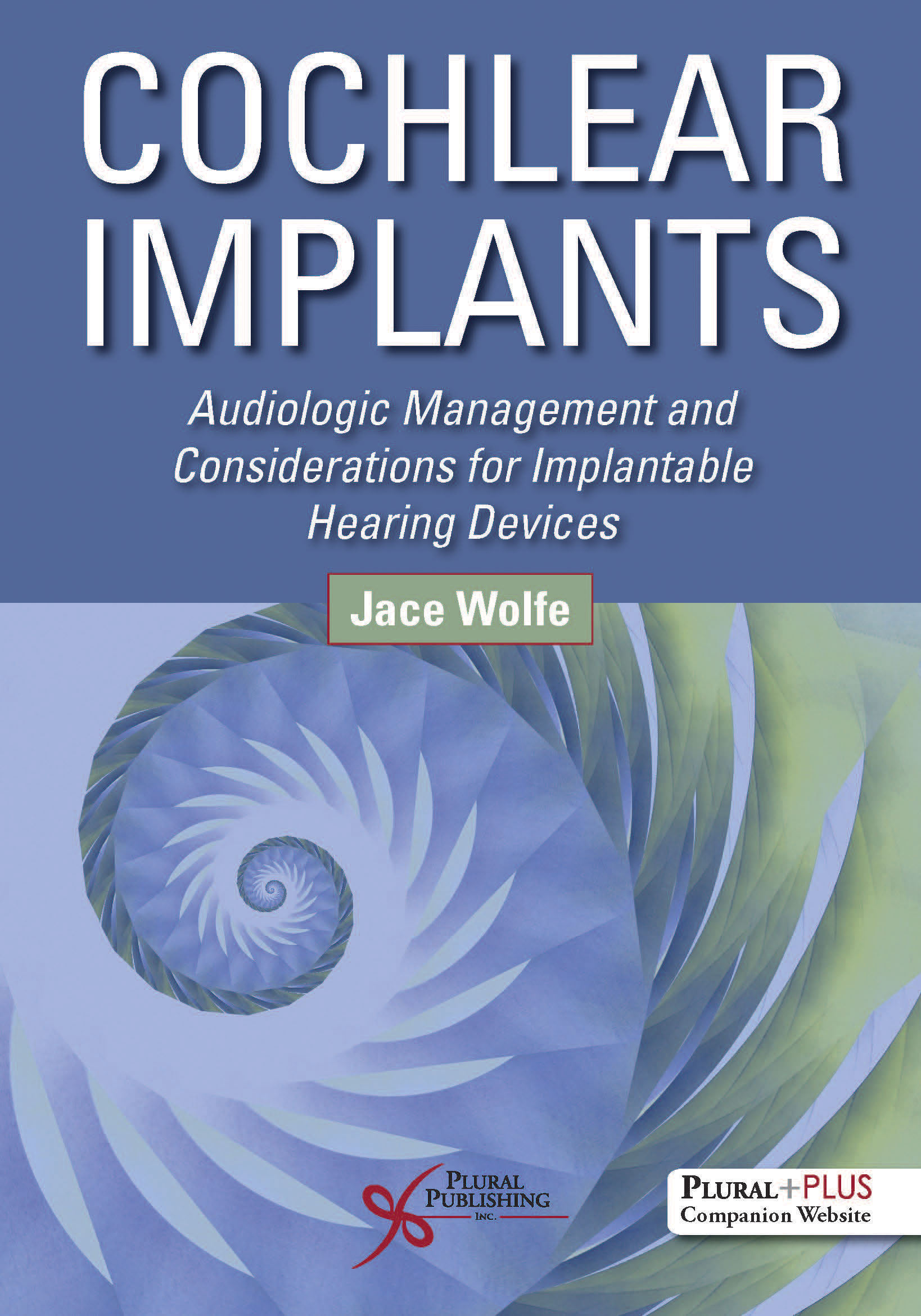
Cochlear Implants: Audiologic Management and Considerations for Implantable Hearing Devices
First Edition
Jace Wolfe
Details: 858 pages, Full Color, Hardcover, 8.5" x 11"
ISBN13: 978-1-59756-892-0
© 2020 | Available
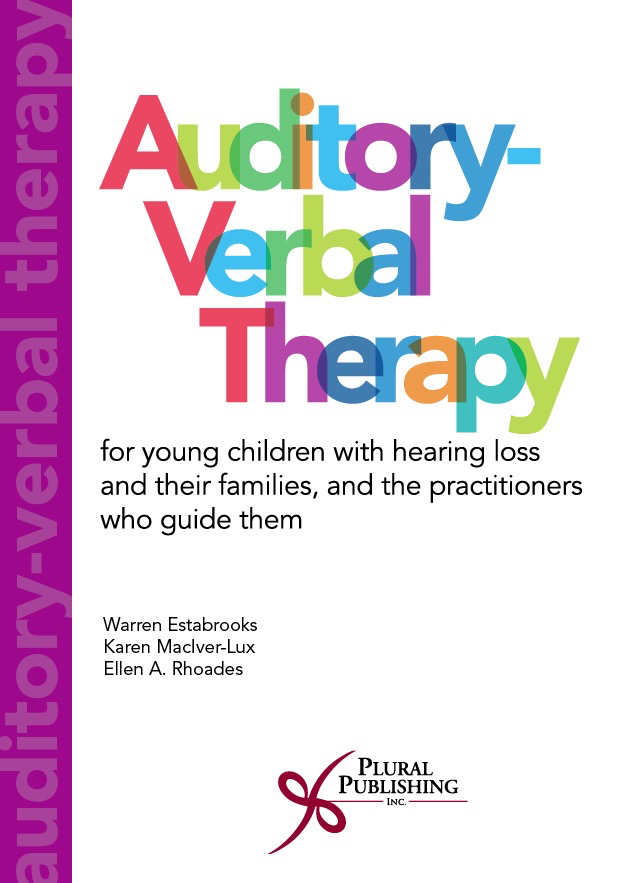
Auditory-Verbal Therapy: For Young Children with Hearing Loss and Their Families, and the Practitioners Who Guide Them
First Edition
Warren Estabrooks, Karen MacIver-Lux, Ellen A. Rhoades
Details: 602 pages, B&W, Hardcover, 7" x 10"
ISBN13: 978-1-59756-888-3
© 2016 | Available
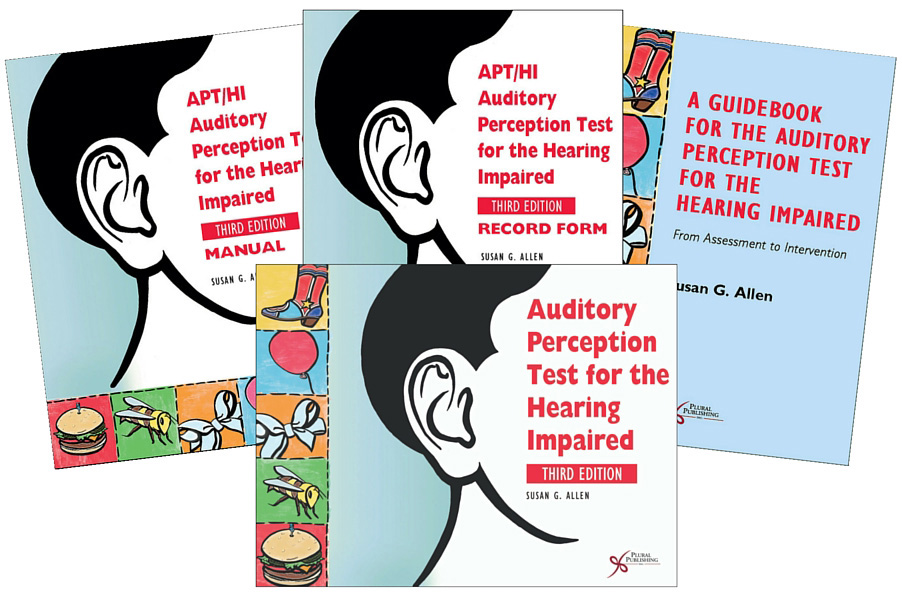
Auditory Perception Test for the Hearing Impaired (APT/HI)
Third Edition
Susan G. Allen
Details: Full Color, Spiral-Bound Test Book, 8.5" x 11", plus Guidebook and Companion website with supplementary materials
ISBN13: 978-1-59756-590-5
© 2016 | Available
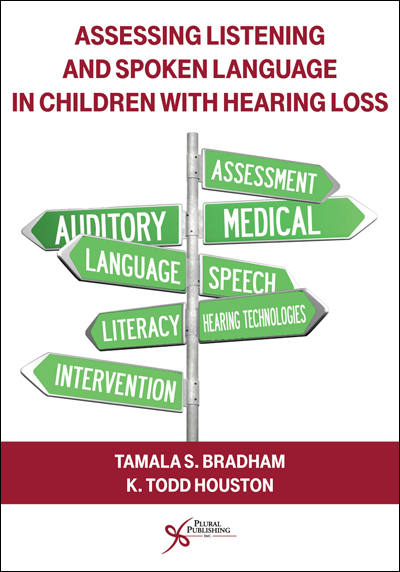
Assessing Listening and Spoken Language in Children with Hearing Loss
First Edition
Tamala S. Bradham, K. Todd Houston
Details: 496 pages, B&W, Softcover, 7" x 10"
ISBN13: 978-1-59756-576-9
© 2015 | Available
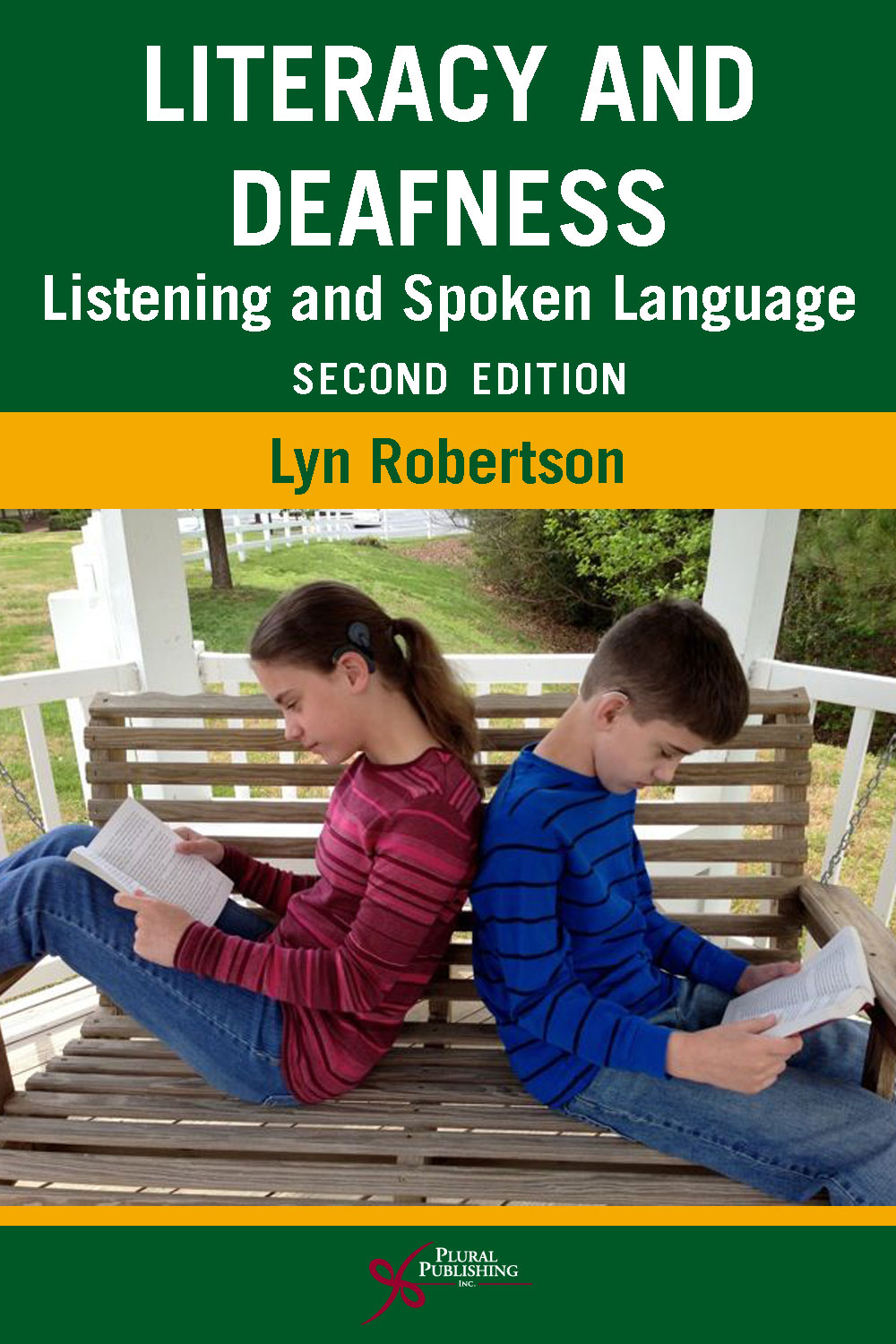
Literacy and Deafness: Listening and Spoken Language
Second Edition
Lyn Robertson
Details: 400 pages, B&W, Softcover, 6" x 9"
ISBN13: 978-1-59756-557-8
© 2014 | Available
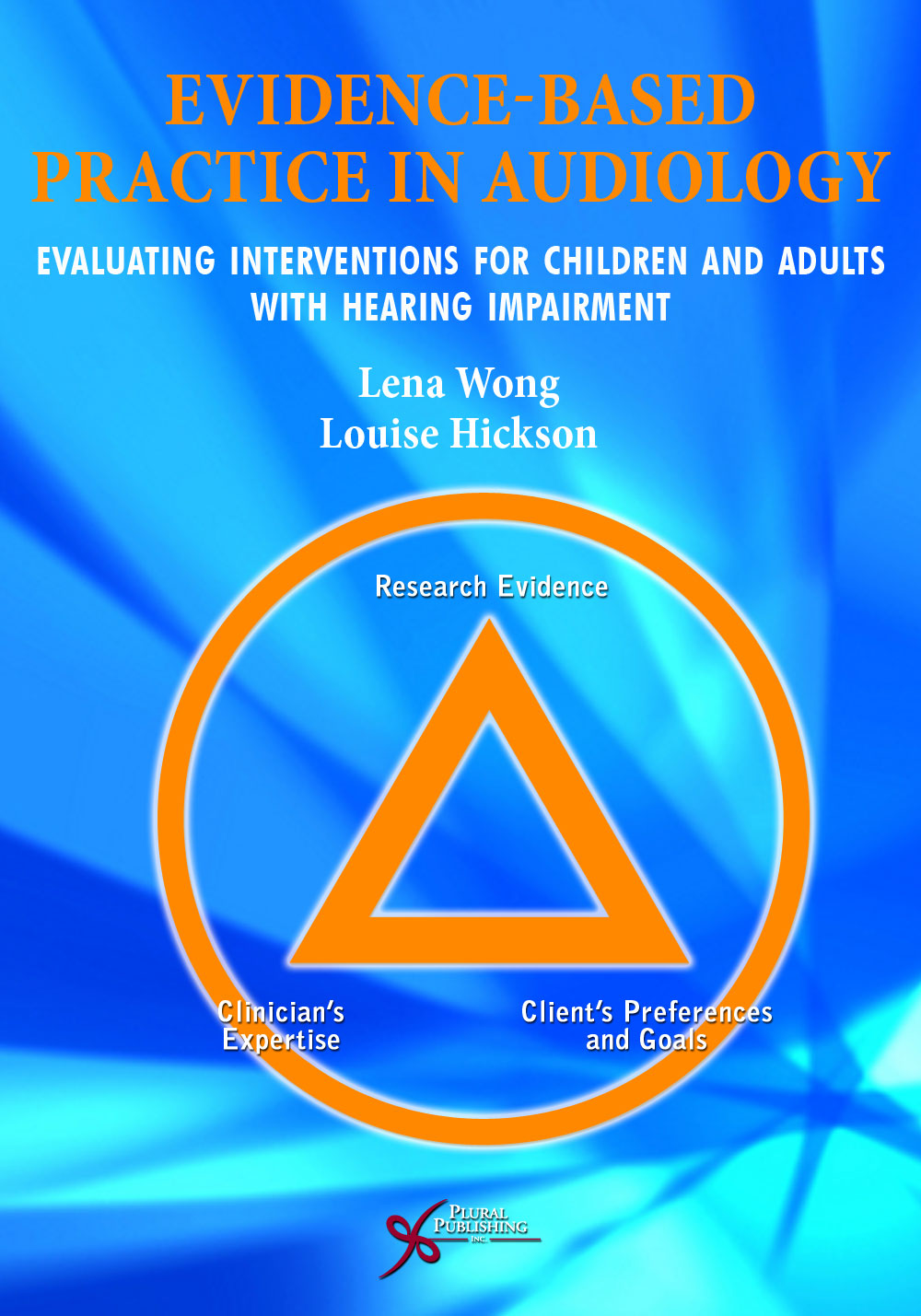
Evidence-Based Practice in Audiology: Evaluating Interventions for Children and Adults with Hearing Impairment
First Edition
Lena Wong, Louise Hickson
Details: 356 pages, B&W, Softcover, 7" x 10"
ISBN13: 978-1-59756-419-9
© 2012 | Available
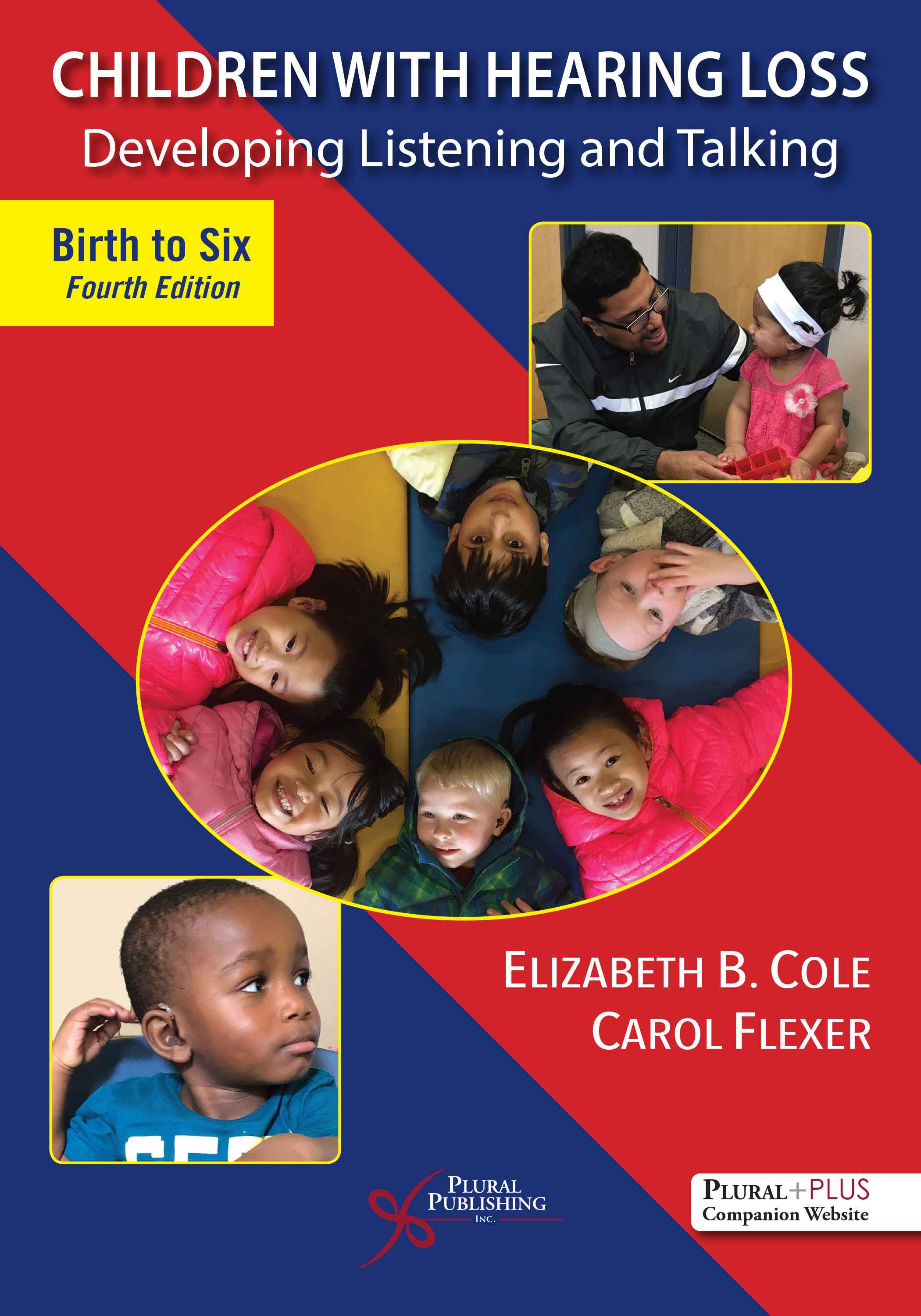
Children with Hearing Loss: Developing Listening and Talking, Birth to Six
Fourth Edition
Elizabeth B. Cole, Carol Flexer
Details: 411 pages, B&W, Softcover, 7" x 10"
ISBN13: 978-1-63550-154-4
© 2020 | Available
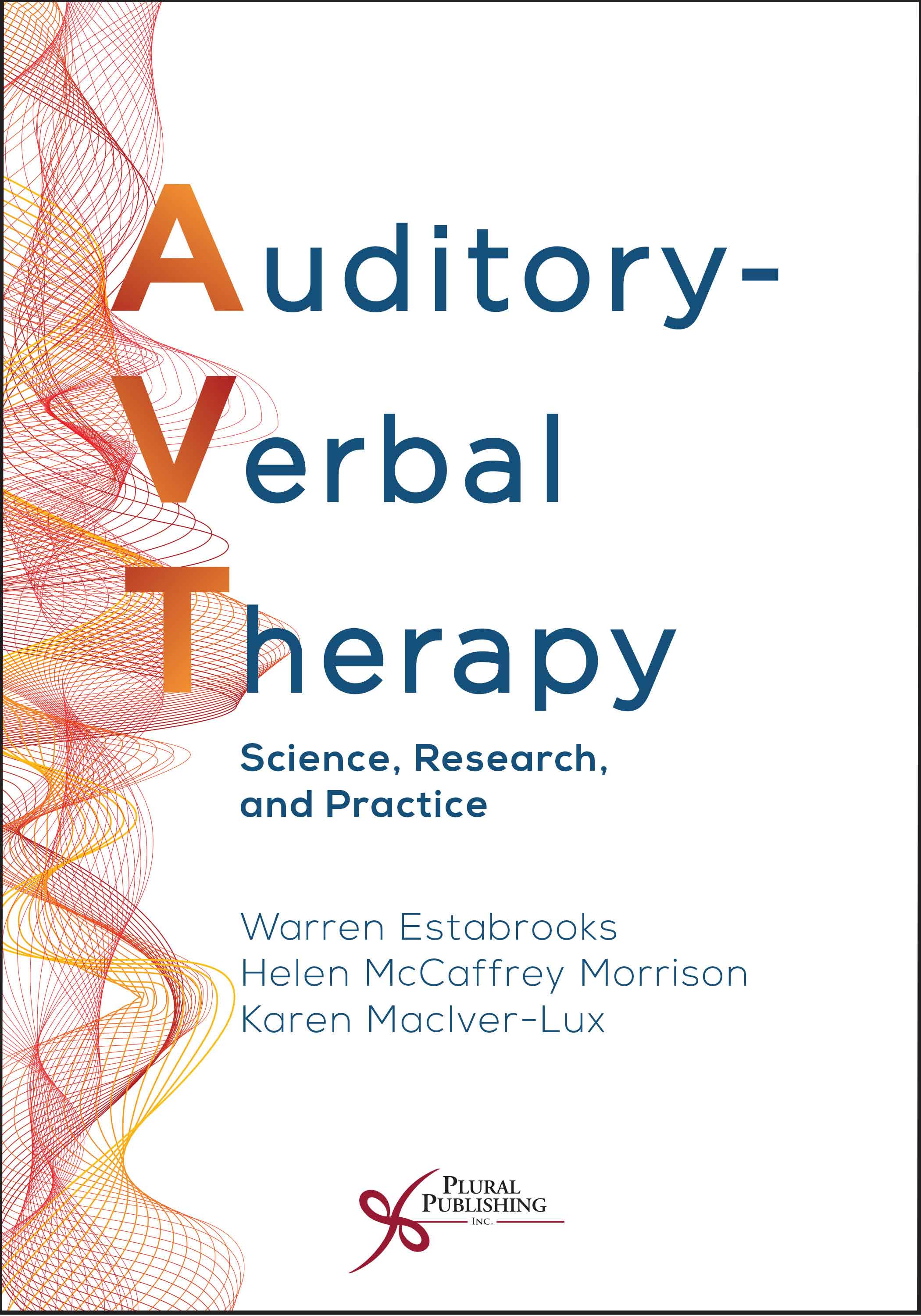
Auditory-Verbal Therapy: Science, Research, and Practice
First Edition
Warren Estabrooks, Helen McCaffrey Morrison, Karen MacIver-Lux
Details: 934 pages, B&W, Hardcover, 7" x 10"
ISBN13: 978-1-63550-174-2
© 2020 | Available
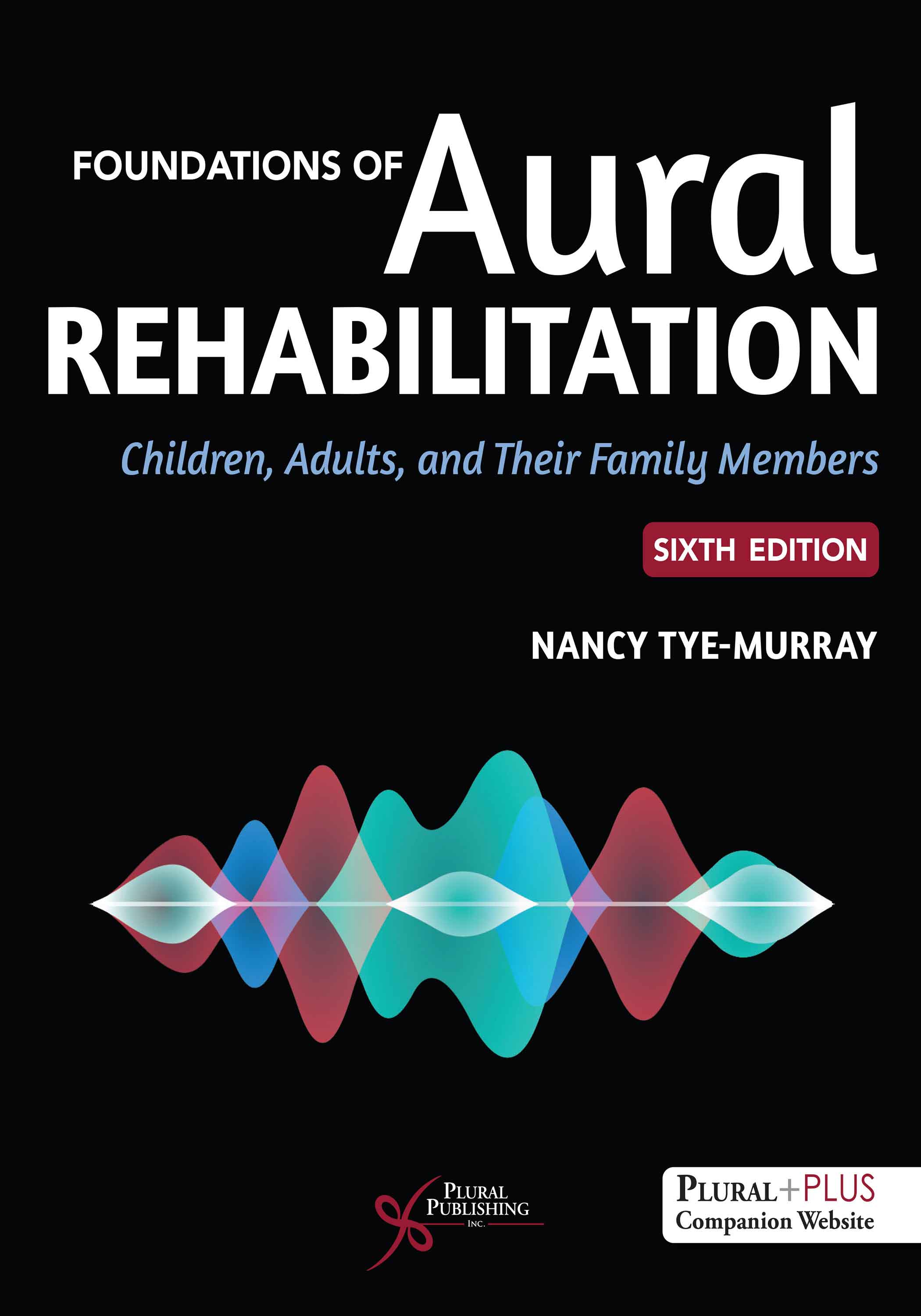
Foundations of Aural Rehabilitation: Children, Adults, and Their Family Members
Sixth Edition
Nancy Tye-Murray
Details: 567 pages, 2-Color, Softcover, 8.5" x 11"
ISBN13: 978-1-63550-420-0
© 2024 | Available
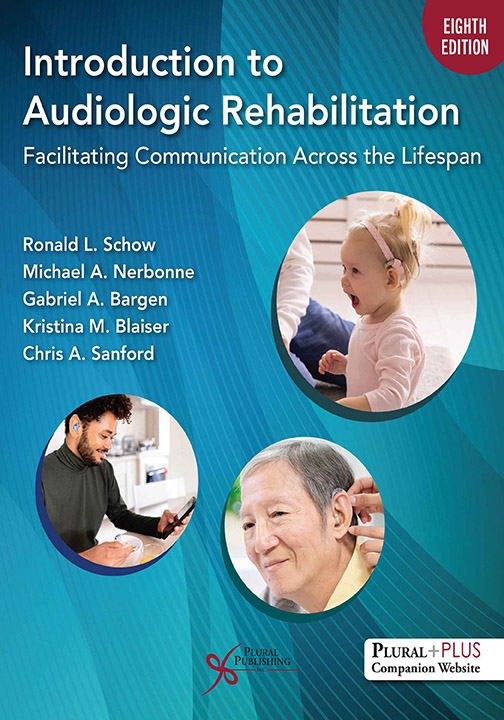
Introduction to Audiologic Rehabilitation: Facilitating Communication Across the Lifespan
Eighth Edition
Ronald L. Schow, Michael A. Nerbonne, Gabriel A. Bargen, Kristina M. Blaiser, Chris A. Sanford
Details: 542 pages, 2-Color, Softcover, 8.5" x 11"
ISBN13: 978-1-63550-755-3
© 2026 | Available
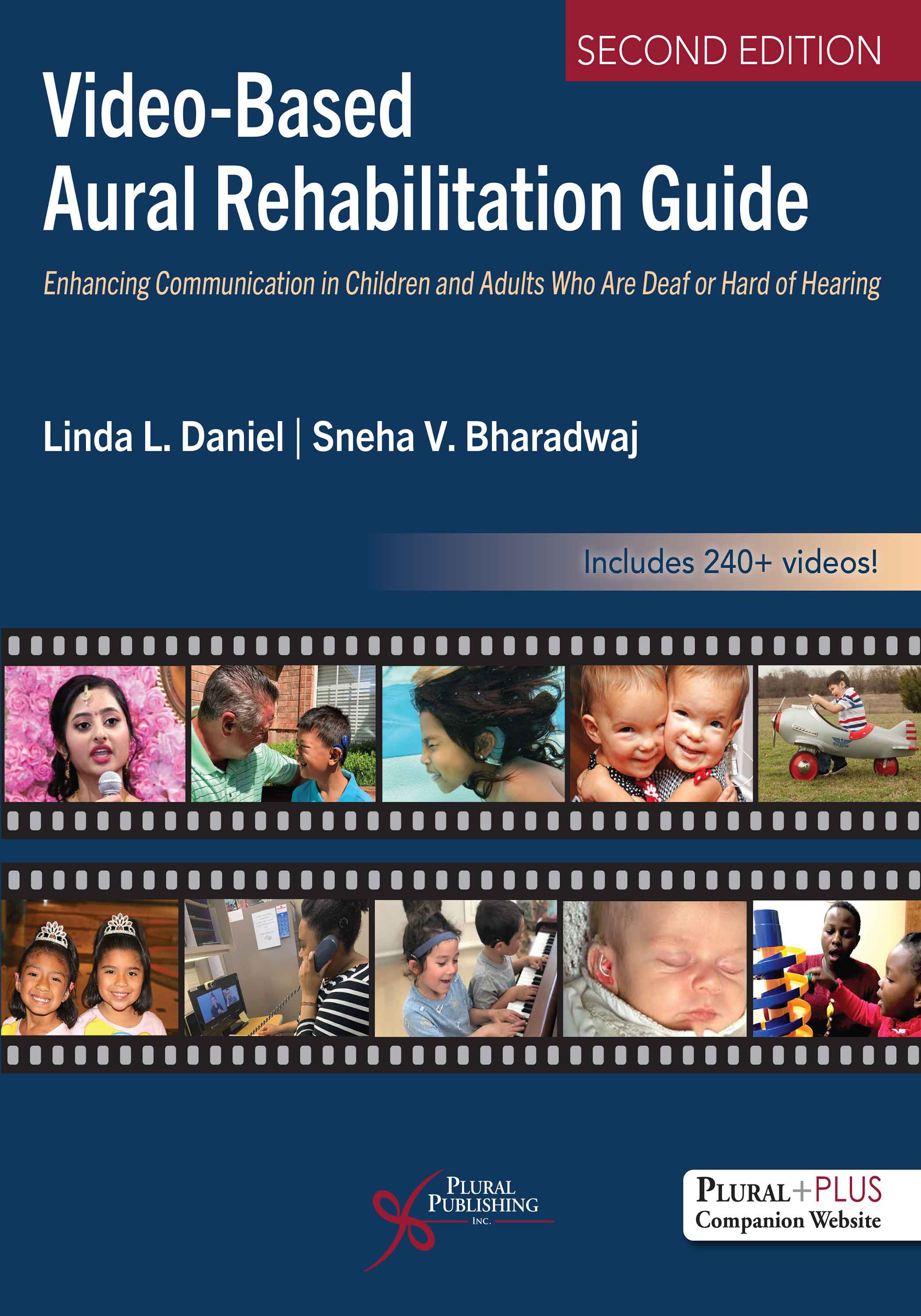
Video-Based Aural Rehabilitation Guide: Enhancing Communication in Children and Adults Who Are Deaf or Hard of Hearing
Second Edition
Linda L. Daniel, Sneha V. Bharadwaj
Details: 426 pages, B&W, Softcover, 8.5" x 11"
ISBN13: 978-1-63550-753-9
© 2026 | Available
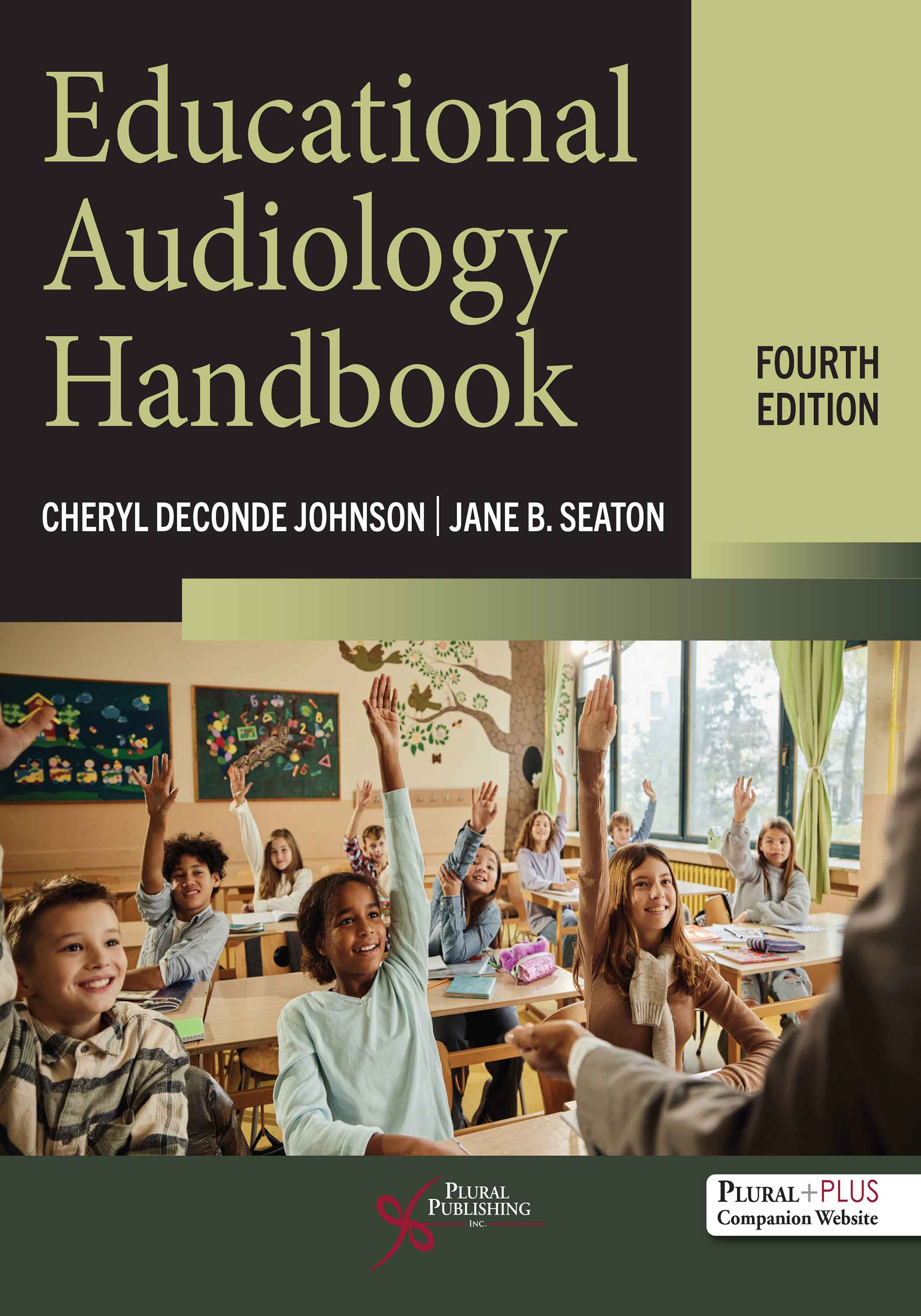
Educational Audiology Handbook
Fourth Edition
Cheryl DeConde Johnson, Jane B. Seaton
Details: 669 pages, B&W, Softcover, 8.5" x 11"
ISBN13: 978-163550-754-6
© 2026 | Available


